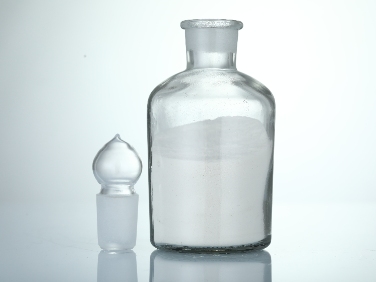Mortar in construction is generally a bonding medium between masonry units: bricks, blocks, and stones. Additives are being introduced to mortars to enhance their performance and durability; hence, HPMC has become indispensable in modern construction.
HPMC is one of the effective cellulose ethers for the improvement of water retention, workability, and adhesion properties in mortar to achieve effective and reliable applications in construction.
In this article, we will look at the role of HPMC in building mortar, unique properties, and what benefits it brings to this construction material.
So, let's get started.

Hydroxypropyl methylcellulose (HPMC) is a cellulose derivative chemically modified and widely used in building construction to improve performance in remedies. It is a water-soluble material with excellent properties of thickening, binding, and film-forming, among others. HPMC improves the consistency and stability of mortar mixes, hence allowing even spread and better adhesion on surfaces.
HPMC is also widely used in dry-mix mortar products such as tile adhesives, cement-based plasters, self-leveling compounds, and grout.
HPMC is added to building construction mortar, thereby significantly improving its physical and chemical properties. The main reasons for applying HPMC in mortar formulations are as follows:
1. Superior Water Retention
HPMC raises the mortar's water retention capability, preventing the water from evaporating too fast during the curing process. Proper hydration can keep the cement fully reacted and hence stronger bonds with less cracking. This property is particularly useful in hot or dry climates.
2. Improved Workability
It would be easier to mix mortar with HPMC because of its better viscosity and consistency. The chances of sagging are less, and it's suitable for vertical and overhead applications, such as wall rendering or tile installation.
3. Improved Adhesion
HPMC enhances the bonding strength of mortar and, therefore, its adhesion in diverse substrates. That would be the assurance of long-lasting installations, especially in tile adhesives and exterior wall renders.
4. Extended Open Time
HPMC extends the open time of mortar and provides workers with more flexibility during application. Large projects, in particular, require precision, and therefore, controlling and managing time effectively.
5. Shrinkage and Cracking Resistance
HPMC improves water retention and reduces drying shrinkage, minimizing the risk of cracking in mortar and providing more durable, more pleasing finishes.
HPMC is used in a wide number of applications involving construction, each benefiting from its special properties. Below are some of the key applications of this additive in construction mortar products:
In tile adhesives, HPMC allows for smooth application and good adhesion between the tiles and substrates. Preventing sag in vertical installations gives sufficient flexibility due to movements and changes in temperature.
2. Cement-Based Plasters and Renders
HPMC improves plaster workability and spreadability to ensure evenness and a uniform finish. Due to its water retention, the plaster cures well, hence reducing cracks within the plaster and also improving the durability of the plaster.
In self-leveling mortars, HPMC acts as a stabilizer and thickener, ensuring the mixture flows smoothly while maintaining its consistency. This results in perfectly level surfaces, ideal for flooring applications.
4. Grouts
HPMC improves the workability or grout cohesiveness to make grouting in the joints easily and develops resistance against shrinkage or cracks. Further, it improves the water retention capability for longer action, thereby providing appealing grout lines.
5. Masonry Mortar
In masonry mortar, HPMC improves bond strength and workability, allowing for easier application and better adhesion of bricks and blocks. It also ensures that the mortar retains moisture during the curing process, leading to stronger structures.
Selection of appropriate grades of HPMC is highly important based on specific application requirements of mortar. Essential factors to be considered in selecting the appropriate type of HPMC include:
1. Viscosity
High-viscosity HPMC is suitable for applications that require strong cohesion, such as tile adhesives and renders. Low-viscosity grades are better for self-leveling compounds.
2. Solubility
The HPMC should dissolve readily in water to be dispersed uniformly throughout the mortar mix.
3. Compatibility
HPMC should be compatible with other additives in mortar mix, such as cement, sand, and other polymers.
4. Setting Time
The setting time of mortar can be influenced by different grades of HPMC. A product should be selected that will match the project schedule and ambient conditions.
HPMC has become a vital additive in building mortar, revolutionizing its performance and reliability. With superior water retention, enhanced workability, and improved adhesion, HPMC ensures that mortars deliver strong, durable, and aesthetically attractive results.
Whether for tile adhesives, plasters, or masonry applications, HPMC provides the consistency and flexibility required for modern construction projects. Proper selection of grade HPMC for builders and manufacturers can optimize performance in mortar formulations.
Related News and Blogs
24
Aug., 2024
Let's meet Indonesia Coatings Exhibition 2024
The 10th Paintistanbul & Turkcoat Fair will be held at the Istanbul Exhibition Center in Turkey from May 8th...
19
Nov., 2021
What Causes A Cracked Putty Layer?
The one-off scraping thickness of the putty is directly proportional to the curing shrinkage strength, which increases in proportion to the tendency of the putty to crack.
04
Nov., 2021
Whether you are carrying out small repairs or building walls, knowing how to mix the mortar needs to be precise. If the mortar is too dry, the blocks will not stick together properly. If it is too wet, flowing mortar can spill out of the joints, resulting in wasted time and materials for clean-up.
25
Oct., 2021
The Effect of Winter Construction Temperature on Tile Adhesives
As we all know, tile adhesive is generally made from cement and mixed with various additives. It is mixed with water at the construction site and then applied to the wall or floor.

Get in Touch
Interested in how our HPMC can enhance your personal care formulations? Contact us to request a free sample and experience the superior quality of our cellulose ether products.